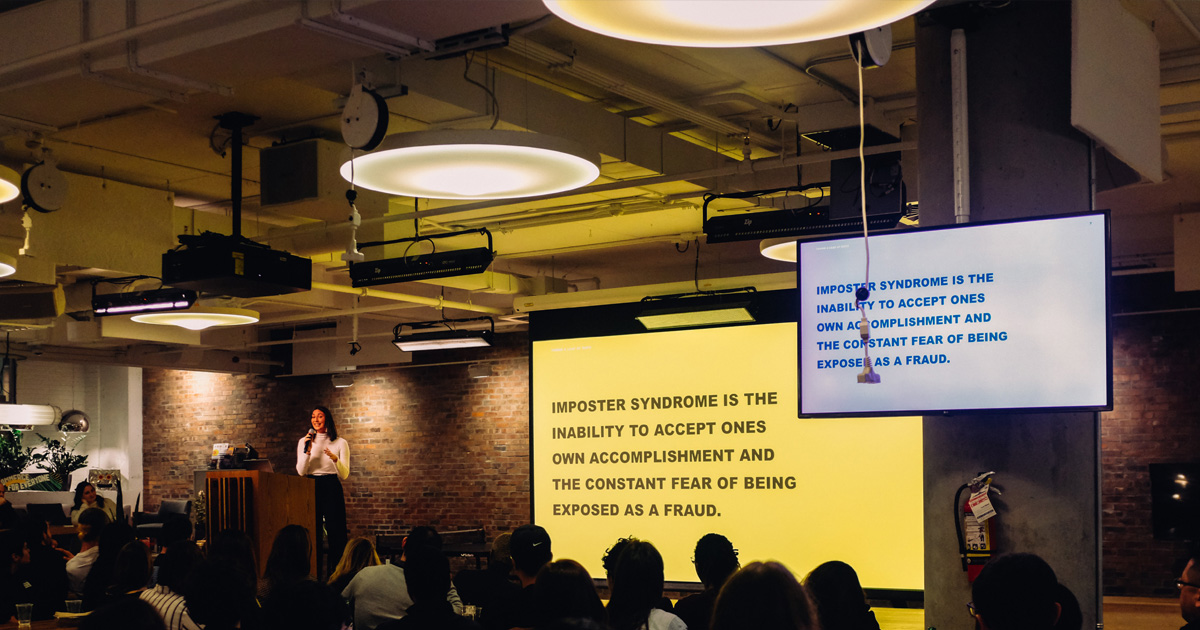Best Practices for Hosting Virtual Workshops
Virtual workshops have become an essential tool for corporate training, team collaboration, and knowledge sharing. In a world where remote work and hybrid models are the norm, mastering the art of hosting effective online workshops has never been more critical. They offer unique opportunities to connect with global teams, foster innovation, and drive meaningful outcomes—all without the constraints of physical location.
Whether you're planning a virtual corporate workshop or brainstorming interactive workshop ideas, the right strategies can transform these sessions into engaging and impactful experiences.
In this article, we’ll explore virtual training best practices, share interactive workshop ideas, and guide you on how to plan a virtual workshop that engages and inspires.
Table of contents
- What is an online workshop?
- How to plan a virtual workshop
- Virtual workshop best practices
- Virtual workshop activities
- Virtual workshop ideas for corporates
- Boosting engagement in virtual training
- Conclusion
What is an online workshop?
An online workshop is a structured and interactive virtual session where participants collaborate, learn, and share ideas using digital tools. Unlike traditional in-person workshops, virtual workshops allow individuals from different locations to come together seamlessly, breaking down geographical barriers. They often rely on video conferencing software, collaborative platforms, and interactive tools to replicate the experience of a physical workshop.
These workshops are increasingly popular due to their flexibility and scalability. Participants can join from the comfort of their own spaces, saving time and reducing costs associated with travel and venue bookings. Moreover, virtual corporate workshops are particularly valuable for remote teams, offering opportunities for professional development without the need for physical travel. They also open up avenues for diverse perspectives, as people from various cultural and professional backgrounds can easily participate, enriching discussions and outcomes.
As technology continues to evolve, the potential for online workshops is limitless, making them a cornerstone of modern education and corporate training.
How to plan a virtual workshop
Planning a virtual workshop is both an art and a science. It requires a blend of strategic foresight and practical considerations to ensure that the session meets its objectives while keeping participants engaged. A well-executed virtual workshop not only delivers valuable insights but also leaves attendees feeling motivated and empowered. Here are some detailed steps to set the stage for success:
-
Define clear objectives: Identify the workshop’s goals and outcomes. For instance, is it to train employees on a new tool, brainstorm ideas, or resolve a specific issue? Clear objectives provide a roadmap for structuring the session and measuring its success.
-
Choose the right tools: Select platforms that align with your workshop’s needs. For example, use Miro’s flowchart maker for visual collaboration or Digital Samba for HD video conferencing and breakout rooms. Ensure the chosen tools are user-friendly to avoid technical barriers for participants.
-
Create an agenda: A well-structured agenda acts as a guide for both the facilitator and participants. Include time allocations for each segment, such as presentations, group activities, and Q&A sessions. Sharing the agenda in advance helps participants prepare and manage their expectations.
-
Engage participants early: Build excitement and involvement before the session. Share pre-workshop materials, such as videos, reading materials, or short surveys. Conduct a quick poll to gather input or identify key topics of interest. Studies show that 72% of participants feel more engaged when they contribute to the session design.
-
Test technology: Conduct a dry run to identify and resolve any potential technical issues. Test all tools, including video conferencing, screen sharing, and collaborative platforms. This step ensures a smooth experience and minimises disruptions during the live session.
-
Set ground rules: Establish guidelines for participation, such as muting microphones when not speaking, using the chat feature for questions, and respecting others’ contributions. Clear rules create a professional and respectful environment.
-
Personalise content: Tailor the workshop to your audience by understanding their needs, preferences, and experience levels. Personalisation enhances relevance and keeps participants engaged throughout the session.
Virtual workshop best practices
Virtual workshops thrive on effective engagement, seamless facilitation, and strategic organisation. Here are some key best practices:
-
Interactive workshop ideas: Incorporate diverse activities such as live polls, breakout discussions, or collaborative exercises to keep energy levels high. For example, use digital whiteboards or brainstorming tools to visualise ideas and encourage collective creativity.
-
Facilitate active participation: Encourage open-ended discussions, pose thought-provoking questions, and create moments where every voice can be heard. Research indicates that workshops with interactive elements are 34% more effective at achieving their objectives. Active facilitation can also build trust and foster a collaborative environment.
-
Limit session length: Virtual workshops should respect attention spans. Break sessions into manageable segments of 90 minutes or less, with short breaks to help participants stay focused and refreshed. This approach combats virtual fatigue and ensures sustained engagement throughout.
-
Follow-up: Learning doesn’t end when the workshop concludes. Send attendees a recap of the session’s key points, action items, and additional resources. Consider using Uniqode's business card to share your contact information with participants for ongoing support and questions. Providing this follow-up sustains the momentum and ensures that participants can implement what they’ve learned effectively.
The rise of remote work has solidified virtual workshops as a cornerstone of modern collaboration. In 2023 alone, 80% of businesses reported a surge in virtual training sessions. Virtual workshops offer unparalleled flexibility, allowing organisations to adapt to evolving workplace dynamics while maintaining high levels of engagement and productivity. The shift to hybrid and remote work environments ensures that virtual workshops will remain an integral part of professional development strategies for years to come.
By adopting virtual workshop best practices, businesses can create impactful sessions that resonate with participants and drive long-term results. From reducing costs to broadening accessibility, the benefits of virtual workshops extend across industries and organisational goals.
Virtual workshop activities
Engaging activities can make or break a virtual workshop. Consider these tried-and-tested ideas:
-
Icebreakers: Start with a fun quiz, a quick round of introductions, or light-hearted trivia to set a friendly tone and encourage interaction from the outset. Icebreakers create an immediate sense of connection among participants, even in a virtual environment.
-
Group challenges: Assign collaborative tasks that encourage teamwork. For example, collaborative mind-mapping tools or shared document editors can be used to brainstorm solutions to complex problems. Group challenges foster a sense of camaraderie and encourage creative solutions by leveraging diverse perspectives.
-
Role-playing scenarios: Use role-playing exercises to simulate real-world scenarios. For example, have participants act out customer service situations or project leadership roles. Role-playing promotes empathy, critical thinking, and practical understanding of key concepts.
-
Interactive games: Integrate gamification into your workshop through activities like virtual scavenger hunts, trivia contests, or escape room challenges. These games add a fun, competitive edge while keeping participants fully engaged.
-
Feedback forums: Allocate time for participants to share their thoughts, suggestions, or reflections on the workshop topics. These forums create an inclusive space where everyone’s voice is valued and encourage active engagement throughout the session.
Virtual workshop ideas for corporates
Corporate environments benefit greatly from tailored virtual workshops. Whether it’s leadership training, team building, or strategy sessions, virtual corporate workshops provide:
-
Flexibility to accommodate global teams: Virtual workshops allow employees from different time zones and locations to join seamlessly. This accessibility ensures inclusivity and fosters a global perspective during sessions.
-
Cost savings on travel and venue expenses: Hosting workshops online eliminates the need for costly travel arrangements, accommodation, and physical venues, making it a budget-friendly alternative.
-
Enhanced inclusivity: By removing geographical barriers, virtual workshops provide equal opportunities for participation. Employees with mobility challenges or those located in remote areas can easily attend and contribute to discussions.
-
Customisable content delivery: Corporate workshops can be tailored to focus on company-specific goals or address pressing issues. This personalisation ensures that the content remains relevant and actionable for the organisation.
-
Scalability: Virtual platforms can accommodate small teams or large-scale gatherings, making them ideal for everything from departmental meetings to company-wide training events.
Boosting engagement in virtual training
Boosting engagement is pivotal to the success of virtual workshops. Here are some effective strategies to enhance participant involvement and ensure a memorable learning experience:
-
Gamification: Add competitive elements such as leaderboards, achievement badges, or point-based quizzes to foster engagement. Gamification not only makes the experience more enjoyable but also drives active participation by introducing fun challenges.
-
Feedback loops: Regularly check in with participants to gauge their thoughts, questions, or concerns. Use live polling tools or post-session surveys to gather input, ensuring that the content aligns with their expectations and adapting as necessary. Open dialogue helps maintain relevance and inclusivity.
-
Professional moderation: A skilled moderator ensures smooth transitions between activities, manages time effectively and keeps discussions on track. Moderators also play a crucial role in addressing technical issues and encouraging quieter participants to contribute, ensuring a balanced and dynamic session.
-
Breakout rooms for collaboration: Divide participants into smaller groups for focused discussions or tasks. Breakout rooms promote closer interaction, allowing participants to engage more deeply with the content and their peers.
-
Use multimedia tools: Incorporate videos, infographics, and interactive slides to keep the content visually appealing and engaging. Multimedia tools can simplify complex concepts and maintain participants’ interest throughout the session.
-
Real-time recognition: Acknowledge participants’ contributions during the session by highlighting their ideas or achievements. Real-time recognition fosters a sense of value and encourages continued participation.
Conclusion
Virtual workshops are an indispensable tool for businesses and educators alike. By focusing on interactivity, strategic planning, and leveraging the right tools, you can create workshops that drive results and leave participants feeling enriched.
Need help hosting engaging and effective virtual workshops? Contact our sales team today to discover how Digital Samba can transform your virtual training sessions.
Share this
You May Also Like
These Related Stories

How much does a webinar cost?

Unlocking the Benefits and Opportunities of Virtual Events

